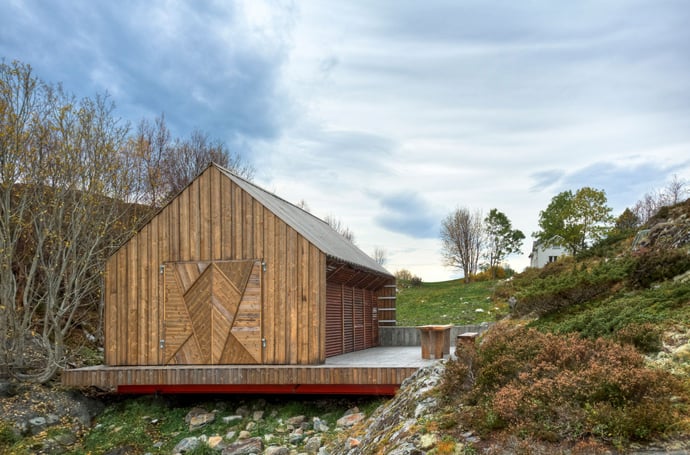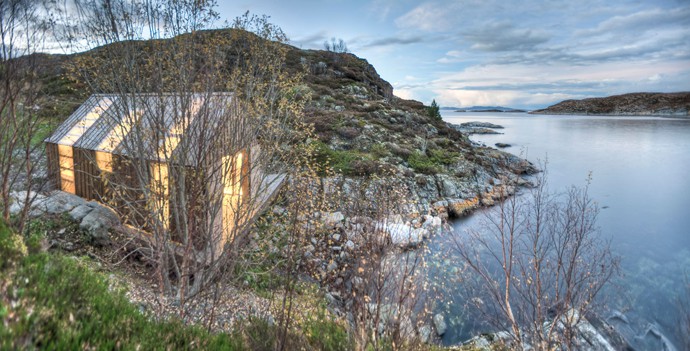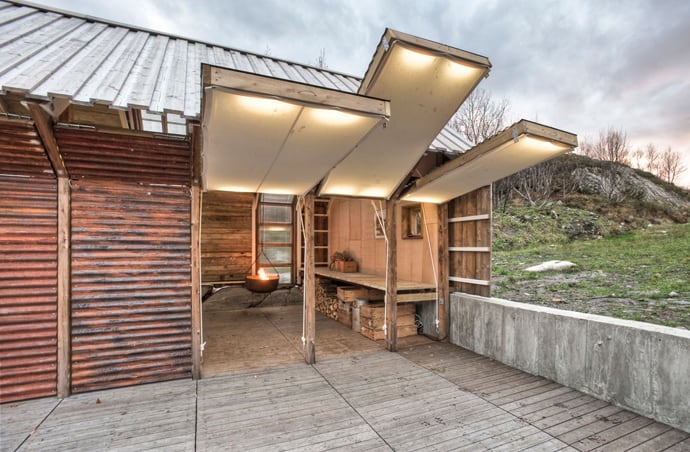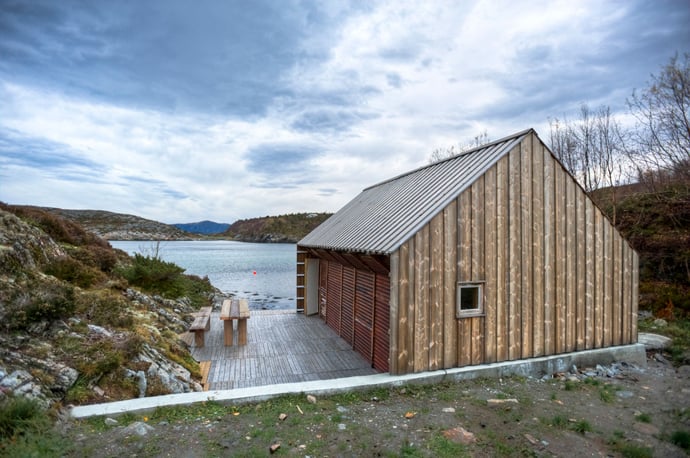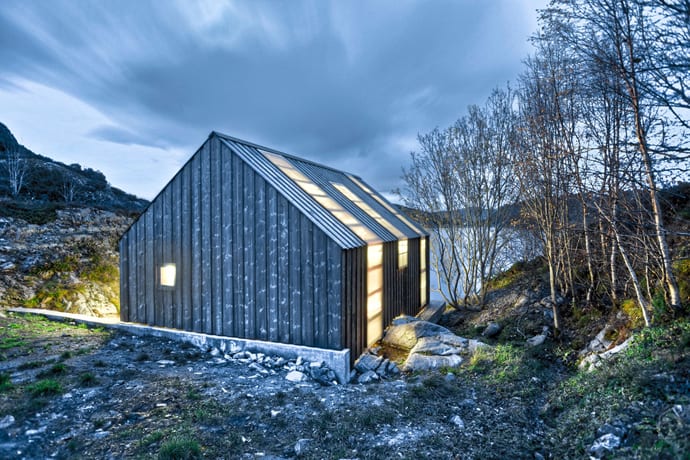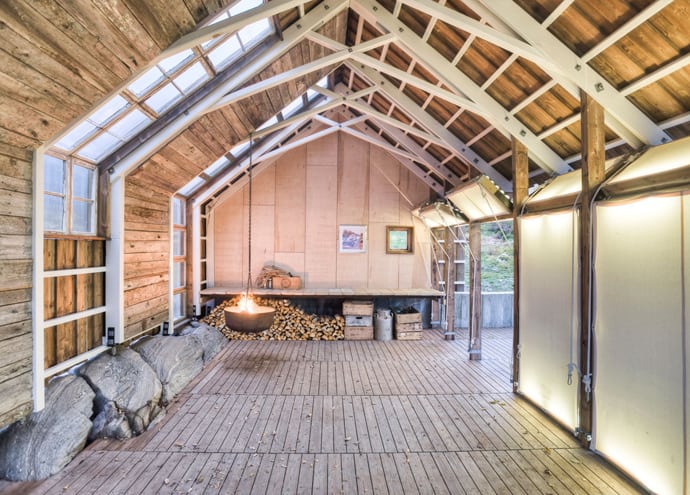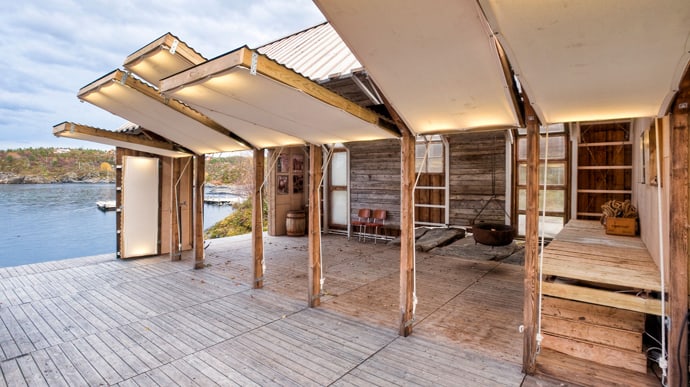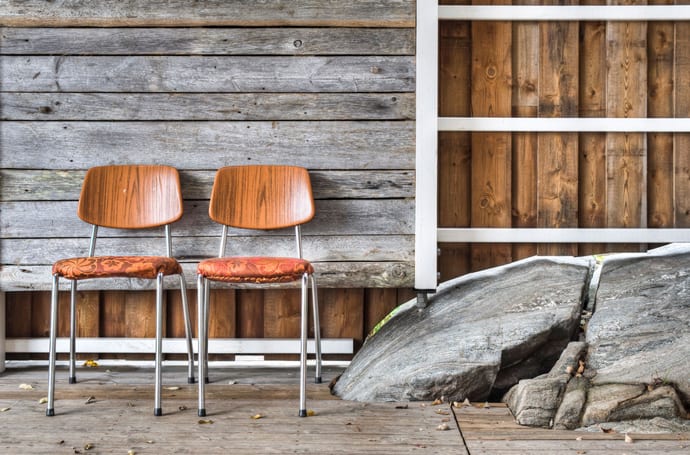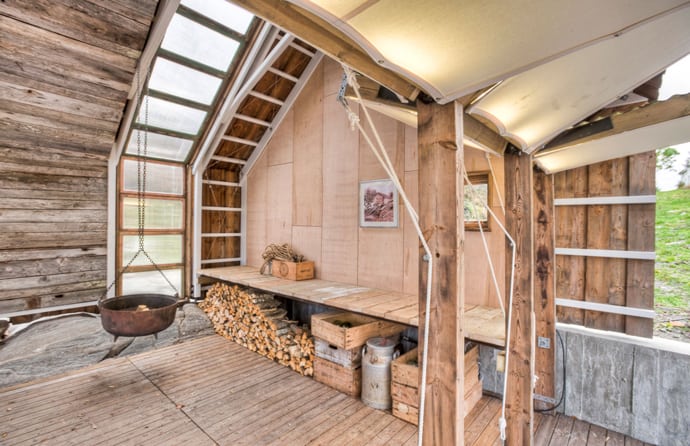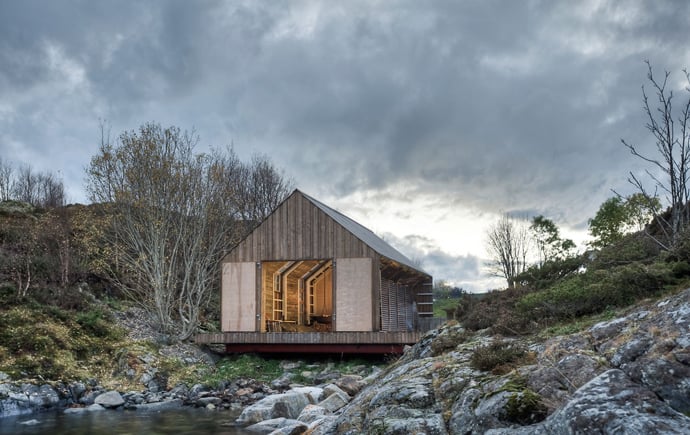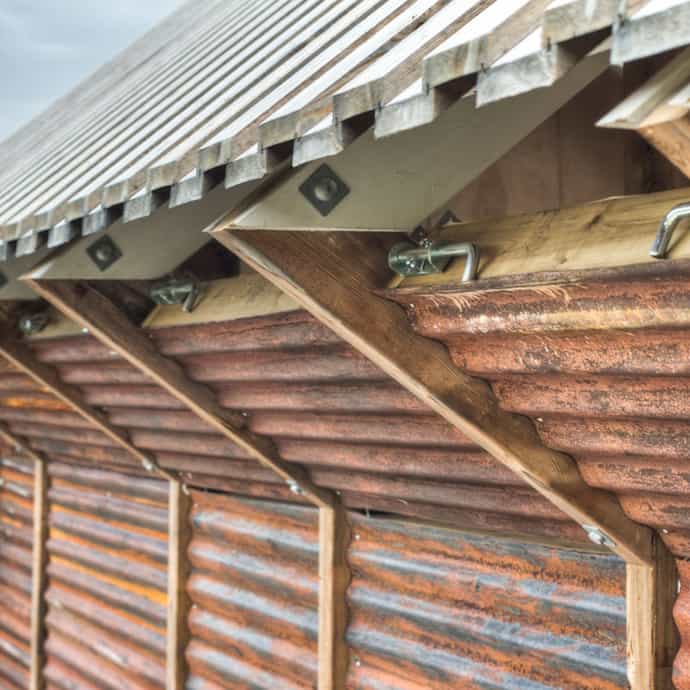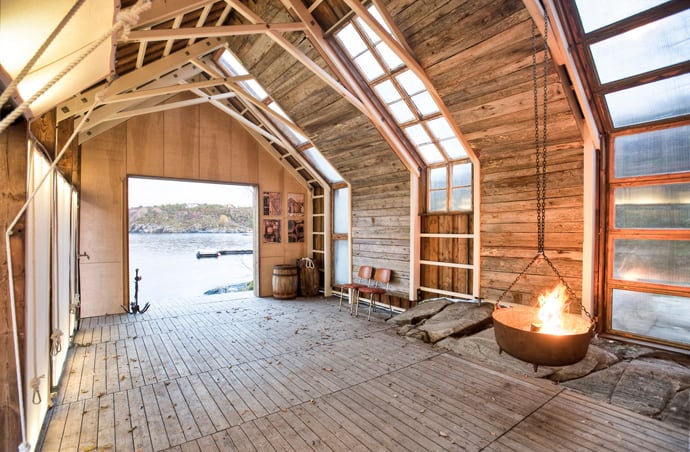The Norwegian boathouse (naust) was a place for the family to store their boat and fishing equipment. The buildings had a rectangular plan to suit the shape of the boat and were typically placed just above sea level at high tide. The gable facing the sea was fitted with two large doors that would enable the boat to be moved in and out.Because of the practical need for storing fish and drying up equipment, the nausts were never made airtight or insulated. Even though storage of the boat still is the main use during the winter, these buildings transform into recreational spaces in the summer.
Designed by architects TYIN tegnestue, the building is made of materials that were salvaged from a dilapidated boathouse on the site, plus new grey-patinated pine. Completed in January 2011 for a total budget of $45,000, this eighteenth century boathouse was torn down, rebuilt and converted into a contemporary summer home by the architects. The Naust paa Aure is located in Møre og Romsdal county, a remote area of Norway. Originally there was an old naust at the site which had to be torn down because of its bad state. The distinct qualities of the old naust became key aspects when designing the new building. The basic shape and size, the climatic adaptation and the material use has roots hundreds of years back through the building tradition of the Norwegian fishermen. The extreme climate in the coastal areas of Norway calls for a durable and weatherproof cladding. Kebony has proven to withstand the strain of the winter storms over time, without using toxic chemicals in the impregnation process. The material fits well with the clients wish for a low maintenance building, and the colour of the facade will slowly shift from dark brown to a bright, silvery grey. After some time the building will blend beautifully with the surrounding nature.

